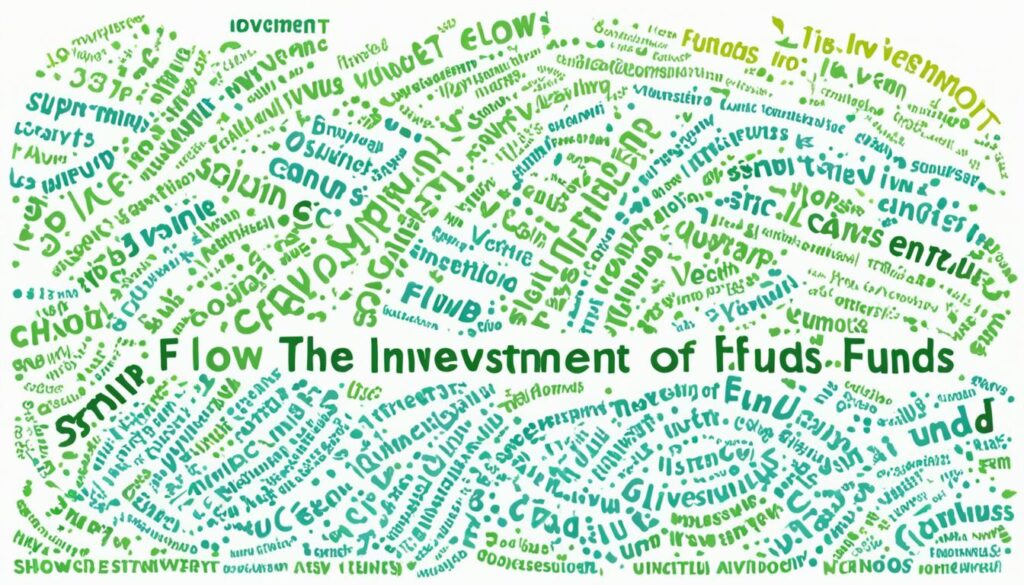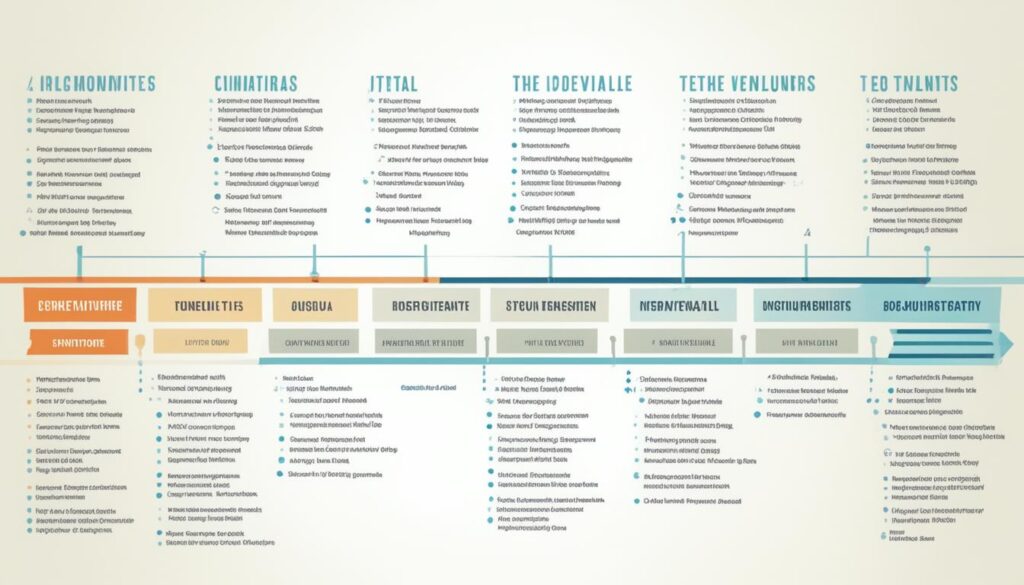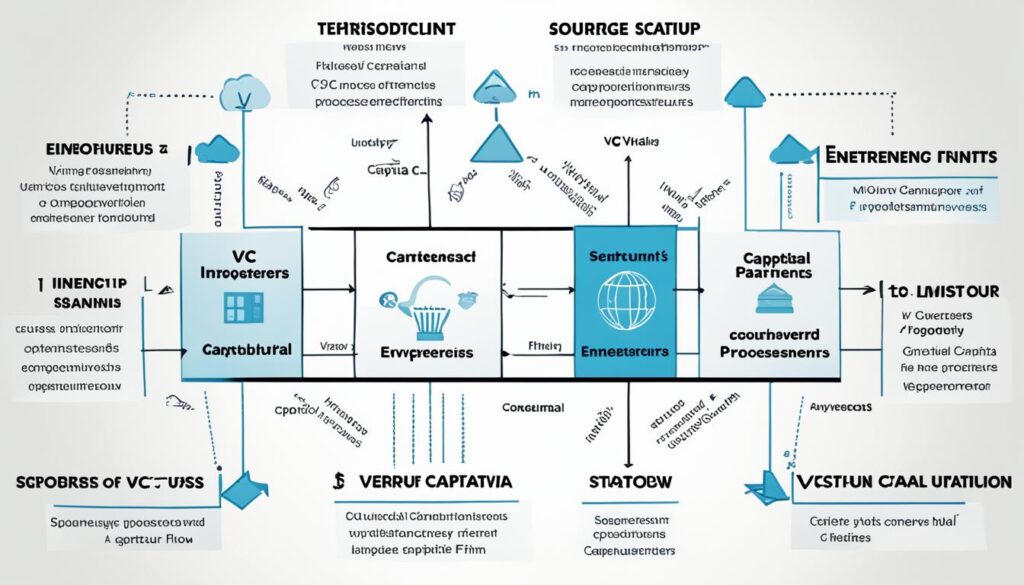If you’re curious about the inner workings of the venture capital (VC) industry, you’re not alone. Many founders and entrepreneurs seeking VC funding wonder, “Where do VCs get their money?” The answer holds important implications for understanding how VCs operate and the incentives that drive their investment decisions.
Venture capitalists typically raise money from a diverse group of limited partners, including pension funds, endowments, insurance companies, and high-net-worth individuals. These investors provide the capital that VC firms then deploy into promising startups and emerging businesses. The VC firm acts as the general partner, managing the fund and making investment decisions, while the limited partners are the passive investors who contribute the majority of the capital.
Understanding the VC funding model is crucial for founders looking to raise capital for their startups. How do venture capitalists make money, and what influences their investment strategies? Let’s explore the mechanics behind the venture capital industry and uncover the sources of VC funding.
Key Takeaways
- Venture capitalists (VCs) typically raise money from limited partners like pension funds, endowments, and wealthy individuals.
- VCs make money through management fees (around 2% of the total fund) and carried interest (typically 20% of the fund’s profits).
- The management fees and carried interest structure influence VCs’ investment incentives and decision-making.
- Founders seeking VC funding need to understand this model to effectively navigate the fundraising process.
- The sources of VC funding and the firm’s compensation structure are important considerations for both VCs and startups.
Understanding Venture Capital Firms
Venture capital is a form of private equity financing that provides capital to young, dynamic companies believed to have high growth potential. The capital comes from a variety of sources, including affluent individuals, pension funds, endowments, insurance companies, and other entities willing to take on higher risks for potentially higher rewards.
Defining Venture Capital
Venture capital operates on a high-risk, high-reward model. VCs invest in businesses they believe have significant growth and return potential, typically in exchange for equity. The funding process usually happens in stages, starting with pre-seed or seed funding for early development, followed by early-stage and growth-stage funding as the company matures.
The Mechanics of Venture Capital
Venture capitalists bring more than just financial investment to the table. They often take on advisory roles, providing strategic guidance, industry expertise, and mentorship to the startups they invest in. VCs also offer valuable networking opportunities, connecting founders with potential customers, partners, and future investors. However, the level of involvement can vary, and some VCs prefer a more hands-off approach, focusing primarily on providing capital.
The Role of Venture Capitalists
Venture capitalists play a crucial role in enabling innovation and fueling economic growth. By providing capital, strategic guidance, and industry connections to promising startups, VCs help these companies develop their products, scale their operations, and ultimately bring new technologies and innovations to the market. This process of funding and supporting high-growth companies has a significant multiplier effect, driving job creation, economic development, and the advancement of various industries.

How VCs Make Money
Venture capital firms generate revenue through two primary mechanisms: management fees and carried interest (carry).
Management Fees
Venture capital firms charge management fees, typically around 2% of the total fund value per year. This fee is used to cover the firm’s operational costs, such as partner and employee salaries, accounting, taxes, and other expenses. The management fees provide a steady stream of revenue for VC firms, even if their investments do not generate significant returns.
Carried Interest (Carry)
Carried interest, or “carry,” is the profit participation that a VC firm earns on the fund’s investments. Typically, VCs receive 20% of the profits generated by the fund’s successful investments, while the remaining 80% goes to the limited partners. The carry provides a powerful incentive for VCs to invest in companies that have the potential for high returns.
Management Fees and Carry Interaction
The management fees and carry structure work together to influence how VCs make money. While the management fees provide a steady income stream, they also reduce the amount of capital available for investment, as they are paid out of the fund’s assets. This means that the fund’s overall returns will be lower than they would be without the management fees. The carry, on the other hand, is the primary way VCs generate significant profits, as it allows them to capture a percentage of the fund’s most successful investments.

VC Investment Strategies
Venture capitalists do not simply invest in good ideas or good plans; instead, they focus on investing in good industries. They seek out industries that are more competitively forgiving than the market as a whole, as this increases the likelihood of their investments generating high returns.
Investing in Good Industries
VC firms carefully analyze the competitive landscape and market dynamics of various industries before deciding where to allocate their capital. They prioritize industries that offer more protection from intense competition, as this provides a higher probability of their portfolio companies achieving significant growth and profitability.
Deal Structuring for Risk Minimization
Venture capitalists structure their deals in a way that minimizes their risk and maximizes their potential returns. This includes negotiating favorable terms, such as liquidation preferences, anti-dilution provisions, and board seats, which give them more control and protection in the event of an unsuccessful investment.

Where do VCs get their money?
Venture capital firms typically raise money from limited partners, such as pension funds, endowments, insurance companies, and high-net-worth individuals. These investors provide the capital that the VC firm then invests in startups and other high-growth companies. The VC firm acts as the general partner, managing the fund and making investment decisions, while the limited partners are the passive investors who provide the capital.
The limited partners are the primary source of funding for venture capital firms. They are willing to take on the higher risk associated with investing in early-stage companies in exchange for the potential for higher returns. Pension funds, endowments, and insurance companies often allocate a portion of their assets to venture capital as part of their investment strategy, seeking to diversify their portfolios and capitalize on the growth potential of innovative startups.
In addition to institutional investors, venture capital firms also raise money from high-net-worth individuals, such as successful entrepreneurs, angel investors, and family offices. These individual investors are often attracted to the potential for outsized returns that venture capital can offer, despite the inherent risks.

The VC firm’s ability to raise capital from these diverse sources is a critical component of their business model. By tapping into a pool of investors willing to take on the risks associated with early-stage investments, venture capital firms can then deploy that capital into promising startups, with the goal of generating substantial returns for their limited partners over time.
Time Commitment of VCs to Portfolio Companies
Contrary to the common perception, venture capitalists (VCs) do not typically dedicate extensive time to guiding and mentoring their portfolio companies. With a typical portfolio of 10 companies and an annual work schedule of 2,000 hours, a VC partner, on average, spends less than two hours per week on any given company in their investment portfolio.
This reality means that entrepreneurs should not expect their VC investors to be deeply involved in the day-to-day operations of their business. Instead, founders should focus on aligning the level of VC involvement with the specific needs and growth stage of their startup. By understanding the time constraints of VCs, entrepreneurs can better manage their expectations and develop strategies to maximize the value their VC partners can bring to the table.
| Metric | Average VC Time Commitment |
|---|---|
| Annual Work Hours | 2,000 hours |
| Portfolio Size | 10 companies |
| Time Spent per Company | Less than 2 hours per week |
The limited time VCs can devote to each portfolio company underscores the importance of effective communication, clear goal-setting, and alignment between founders and their investors. By understanding these constraints, startups can better leverage the expertise and resources their VC partners can provide, while also maintaining a high degree of autonomy and control over their own operations.

Venture Capital Expected Returns
Venture capital returns often follow a power-law distribution, where a small number of highly successful investments generate the majority of a fund’s returns. Venture capitalists typically aim for a return of at least 10 times their initial investment over five to seven years.
Portfolio Diversification Approach
To achieve their target returns, VCs construct a diversified portfolio, expecting that one or two “home run” investments will offset the losses from the majority of investments that either break even or result in partial or total losses. Venture capitalists diversify their portfolios to mitigate the high risk associated with investing in early-stage startups. They invest in a variety of companies across different sectors, stages, and geographies, with the expectation that the few successful investments will generate sufficient returns to offset the losses from the less successful ones. This diversification strategy is crucial for VC firms to achieve their overall fund return targets of 20% to 30% annually.

History of Venture Capital
The origins of the venture capital industry can be traced back to the mid-20th century, with the establishment of the American Research and Development Corporation (ARDC) in 1946. ARDC was the first publicly funded venture capital firm, marking a significant shift in the startup funding landscape. Prior to this, startups had relied heavily on wealthy families for capital, but ARDC’s creation opened the door for startups to raise money from private sources.
Origins and Early Development
The establishment of ARDC laid the groundwork for the modern venture capital industry. This pioneering firm provided funding and support to early-stage companies, focusing on businesses with high growth potential. ARDC’s success paved the way for the emergence of other venture capital firms and the gradual institutionalization of the industry.
Emergence of Modern VC Industry
The venture capital industry continued to evolve in the following decades, with the passage of the Investment Act of 1958 playing a crucial role. This legislation enabled the creation of small business investment companies (SBICs) licensed by the Small Business Administration, further facilitating the growth of venture capital, particularly in the San Francisco Bay Area. Firms like Fairchild Semiconductor became early success stories for the industry, demonstrating the potential for venture-backed startups to drive innovation and economic progress.

Venture Capital Structure
Venture capital firms are typically structured as limited partnerships (LPs), where the partners invest in the VC fund. The VC firm acts as the general partner (GP), responsible for managing the fund and making investment decisions, while the limited partners are the passive investors who provide the capital.
Limited Partnerships
The limited partnership model allows venture capital firms to pool funds from various investors, known as limited partners, and invest in promising startups. The general partner, which is the VC firm, is responsible for identifying, evaluating, and managing the investments, while the limited partners provide the capital and share in the profits and losses generated by the fund.
Roles in a VC Firm
Within a venture capital firm, there are several key roles that work together to identify, invest in, and support the growth of promising startups. These include:
- Associates, who analyze business models, industry trends, and investment opportunities.
- Principals, who serve on the boards of portfolio companies and negotiate deal terms.
- Partners, who oversee the firm’s investment strategy, approve deals, and represent the VC firm in the startup ecosystem.
These professionals collaborate to source, evaluate, and monitor the investments, ensuring that the VC firm’s portfolio is positioned for success.

Regulations and Fees
Venture capital firms and private equity firms are regulated by the U.S. Securities and Exchange Commission (SEC). VC fund managers are compensated through management fees, typically around 2% of the fund’s value, as well as carried interest, which is usually 20% of the profits generated by the fund’s successful investments. These fees and the regulatory environment in which VCs operate are important considerations for both the VC firms and the startups they invest in.
According to industry data, private equity firms typically provide venture capital, with banks also being involved in investments. Capital investments from private equity firms are usually held for 10 years or more, and qualified venture money managers handle less than $150 million in assets on average.
The SEC has also taken steps to reform the industry, as seen in the 2020 announcement under the Investment Advisers Act that allows startups, venture capitalists, and hedge funds to advertise raising money in private offerings. However, this increased access also brings risks, such as the potential for insider trading due to employees being actively involved in the companies where investments are made.
Understanding the regulatory landscape and fee structure of venture capital is crucial for both VC firms and the startups they invest in, as it shapes the incentives and dynamics within the industry.
Impact on Startups and the Economy
Venture capital funding plays a pivotal role in enabling innovation and fueling economic growth. By providing capital, strategic guidance, and industry connections to promising startups, venture capitalists (VCs) help these companies develop their products, scale their operations, and ultimately bring new technologies and innovations to the market. This process of funding and supporting high-growth companies has a significant multiplier effect, driving job creation, economic development, and the advancement of various industries.
The impact of venture capital on the startup ecosystem and the broader economy is profound. According to a study by the National Venture Capital Association (NVCA), companies that received VC funding in the United States between 1970 and 2019 generated more than $6 trillion in revenue and created millions of jobs. These startups, often at the forefront of technological breakthroughs, have the potential to disrupt existing markets, create new industries, and drive economic transformation.
| Metric | Value |
|---|---|
| Revenue Generated by VC-funded Companies (1970-2019) | $6 Trillion |
| Jobs Created by VC-funded Companies | Millions |
| Average Annual VC Investment (2020) | $130 Billion |
| Percentage of U.S. GDP Attributed to VC-backed Companies | 21% |
The symbiotic relationship between VCs and startups drives innovation, creates employment opportunities, and fuels economic growth. By supporting the development and scaling of high-potential companies, the venture capital industry plays a vital role in shaping the future of the American economy and maintaining its global competitiveness.
“Venture capital is the rocket fuel for innovation and economic growth. By providing capital, expertise, and networks to promising startups, VCs help transform bold ideas into thriving businesses that create jobs, disrupt industries, and drive progress.”

Conclusion
As we’ve explored, understanding the venture capital model, including how VCs make money, their investment strategies, and the structure of VC firms, is crucial for founders seeking to raise funding. By recognizing the motivations and dynamics of the VC industry, entrepreneurs can better position their startups for successful partnerships and navigate the fundraising process more effectively.
The venture capital ecosystem continues to play a pivotal role in fostering innovation and driving economic progress in the United States and beyond. As venture capitalists leverage management fees and carried interest to generate returns, they also provide valuable guidance, industry expertise, and networking opportunities to the startups they invest in.
Moving forward, the venture capital model will likely evolve, with emerging funds experimenting with slightly lower management fees and established firms potentially opting for higher fees. However, the core principles of diversification, risk-taking, and the pursuit of high-growth opportunities will remain central to the VC industry’s approach. By understanding these dynamics, founders can navigate the fundraising landscape more effectively and forge productive partnerships with the venture capitalists shaping the future of entrepreneurship.
